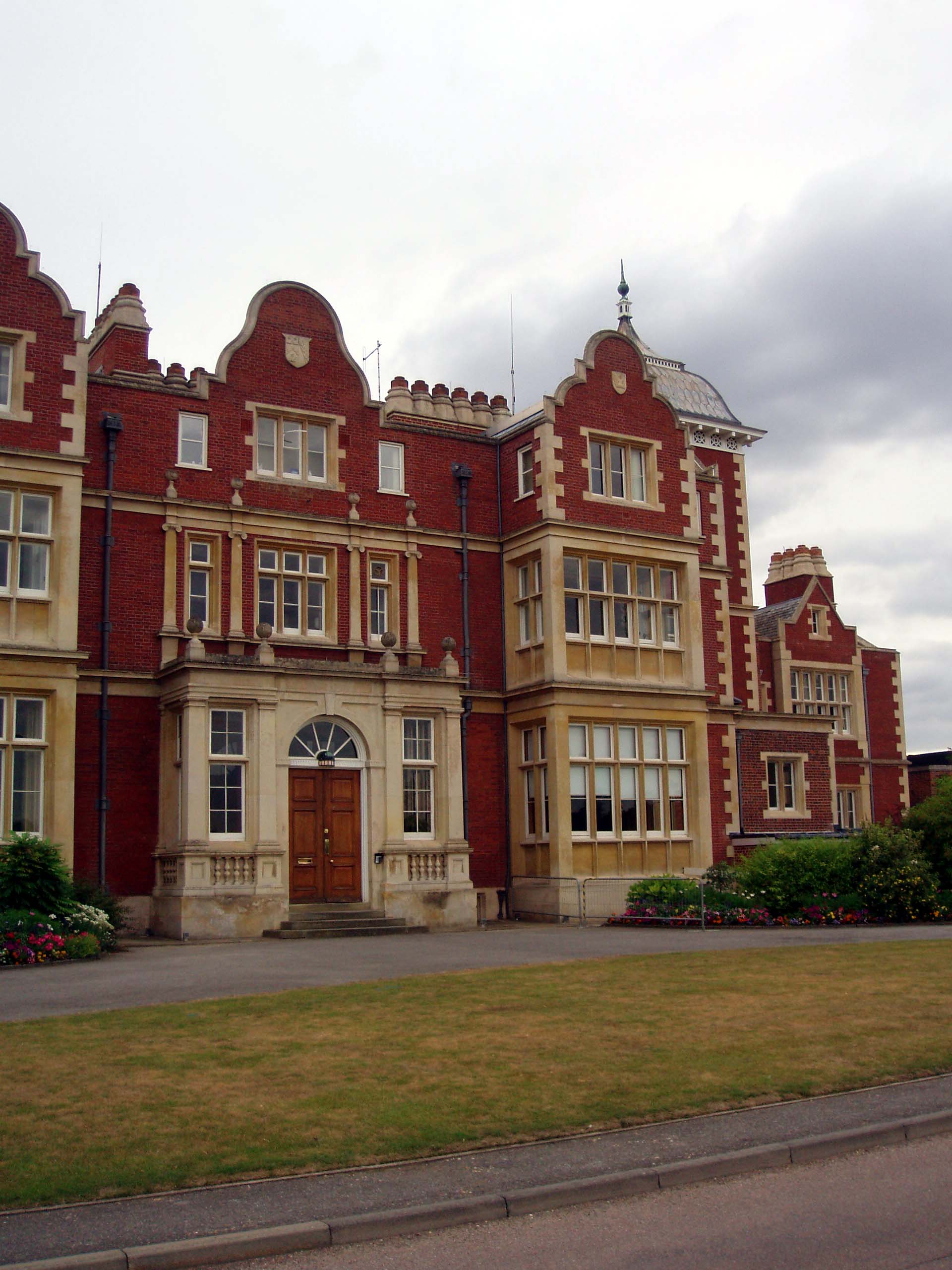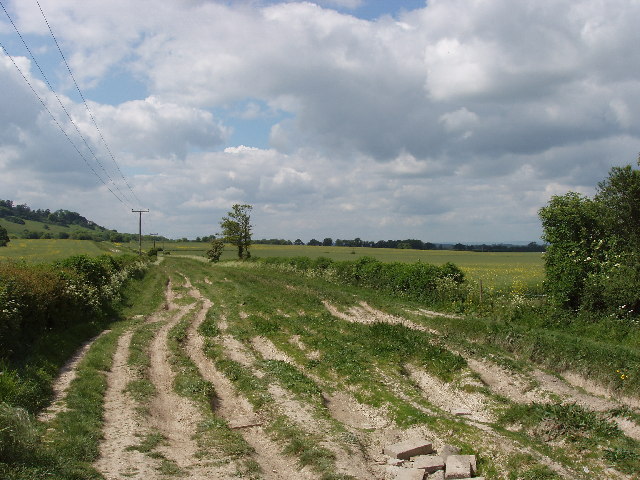|
Babraham Institute
The Babraham Institute is a life sciences research institution and a partner organisation of the University of Cambridge. The Babraham Institute is based on the Babraham Research Campus, partly occupying a former manor house, but also laboratory and science facility buildings on the campus, surrounded by an extensive parkland estate, just south of Cambridge, England. It is an independent and charitable organization which is involved in biomedical research, including healthy aging and molecular biology. The director is Dr Simon Cook who also leads the Institute's signalling research programme. The Babraham Institute is a member of EU-LIFE, an alliance of leading life sciences research centres in Europe. History The institute is located on the historic Babraham Hall Estate (now called the Babraham Research Campus), situated six miles south-east of Cambridge University, near the Gog Magog Hills. It is close to where the ancient Roman Via Devana crossed the prehistoric Ickni ... [...More Info...] [...Related Items...] OR: [Wikipedia] [Google] [Baidu] |
Babraham
Babraham is a village and civil parish in the South Cambridgeshire district of Cambridgeshire, England, about south-east of Cambridge on the A1307 road. Babraham is home to the Babraham Institute which undertakes research into cell and molecular biology. History The parish of Babraham covers an area of and is roughly rectangular in shape. Its straight northern boundary is formed by the ancient Wool Street, separating it from Fulbourn, and its eastern border follows the Icknield Way (now the A11), separating it from Little Abington. The remaining boundaries with Stapleford, Sawston and Pampisford are formed by field boundaries and a small section of the River Granta, on which the village lies. The course of the River Granta through the parish has been changed on numerous occasions; a watermill was listed as valueless in the 14th century when the river had changed course, and additional water channels have been dug for irrigation as well as to form an ornamental canal alongs ... [...More Info...] [...Related Items...] OR: [Wikipedia] [Google] [Baidu] |
Icknield Way
The Icknield Way is an ancient trackway in southern and eastern England that runs from Norfolk to Wiltshire. It follows the chalk escarpment that includes the Berkshire Downs and Chiltern Hills. Background It is generally said to be, within Great Britain, one of the oldest roads the route of which can still be traced, being one of the few long-distance trackways to have existed before the Romans occupied the country. However, this has been disputed, and the evidence for its being a prehistoric route has been questioned. The name is Celto-British in derivation, and may be named after the Iceni tribe. They may have established this route to permit trade with other parts of the country from their base in East Anglia. It has also been suggested that the road has older prehistoric origins. The name is also said to have been initially used for the part to the west and south (i.e. south of the River Thames) but now refers usually to the track or traces north of the Thames. From an ... [...More Info...] [...Related Items...] OR: [Wikipedia] [Google] [Baidu] |
Michael Berridge
Sir Michael John Berridge (22 October 1938 – 13 February 2020) was a British physiologist and biochemist. Born and raised in Southern Rhodesia (now Zimbabwe), he was best known for his work on cellular transmembrane signalling, in particular the discovery that inositol trisphosphate acts as a second messenger, linking events at the plasma membrane with the release of Ca2+ within the cell.Lagnado J. New honorary members for the Biochemical Society. ''The Biochemist'' (December 2004) (accessed 7 January 2009) , he was the Emeritus Babraham Fellow in the Signalling Programme Department of the |
Calcium
Calcium is a chemical element with the symbol Ca and atomic number 20. As an alkaline earth metal, calcium is a reactive metal that forms a dark oxide-nitride layer when exposed to air. Its physical and chemical properties are most similar to its heavier homologues strontium and barium. It is the fifth most abundant element in Earth's crust, and the third most abundant metal, after iron and aluminium. The most common calcium compound on Earth is calcium carbonate, found in limestone and the fossilised remnants of early sea life; gypsum, anhydrite, fluorite, and apatite are also sources of calcium. The name derives from Latin ''calx'' "lime", which was obtained from heating limestone. Some calcium compounds were known to the ancients, though their chemistry was unknown until the seventeenth century. Pure calcium was isolated in 1808 via electrolysis of its oxide by Humphry Davy, who named the element. Calcium compounds are widely used in many industries: in foods and pharma ... [...More Info...] [...Related Items...] OR: [Wikipedia] [Google] [Baidu] |
Inositol Trisphosphate
Inositol trisphosphate or inositol 1,4,5-trisphosphate abbreviated InsP3 or Ins3P or IP3 is an inositol phosphate signaling molecule. It is made by hydrolysis of phosphatidylinositol 4,5-bisphosphate (PIP2), a phospholipid that is located in the plasma membrane, by phospholipase C (PLC). Together with diacylglycerol (DAG), IP3 is a second messenger molecule used in signal transduction in biological cells. While DAG stays inside the membrane, IP3 is soluble and diffuses through the cell, where it binds to its receptor, which is a calcium channel located in the endoplasmic reticulum. When IP3 binds its receptor, calcium is released into the cytosol, thereby activating various calcium regulated intracellular signals. Properties Chemical formula and molecular weight IP3 is an organic molecule with a molecular mass of 420.10 g/mol. Its empirical formula is C6H15O15P3. It is composed of an inositol ring with three phosphate groups bound at the 1, 4, and 5 carbon positions, and three h ... [...More Info...] [...Related Items...] OR: [Wikipedia] [Google] [Baidu] |
Alec Bangham
Alec Douglas Bangham FRS (10 November 1921 Manchester – 9 March 2010 Great Shelford) was a British biophysicist who first studied blood clotting mechanisms but became well known for his research on liposomes and his invention of clinically useful artificial lung surfactants. Life Bangham was the son of Donald Bangham, and Edith Kerby. He studied at the Downs School, and then Bryanston School, and proceeded to earn an MB MS in medicine from University College London. He was appointed to Addenbrooke's Hospital, where he served as a pathologist, in the Royal Army Medical Corps, becoming a captain in 1948. Bangham worked at the Babraham Institute in Cambridge from 1952 to 1982. He is best known for his research on liposomes. Family He was married to Rosalind; they had four children and eleven grandchildren. His brother was Derek Bangham. Awards *1965 doctorate of medicine from London University *1977 Fellow of the Royal Society *1981 Fellow of University College London *199 ... [...More Info...] [...Related Items...] OR: [Wikipedia] [Google] [Baidu] |
Liposomes
A liposome is a small artificial Vesicle (biology and chemistry), vesicle, spherical in shape, having at least one lipid bilayer. Due to their hydrophobicity and/or hydrophilicity, biocompatibility, particle size and many other properties, liposomes can be used as drug delivery vehicles for route of administration, administration of pharmaceutical drugs and nutrients, such as solid lipid nanoparticles, lipid nanoparticles in mRNA vaccines, and DNA vaccination, DNA vaccines. Liposomes can be prepared by disrupting biological membranes (such as by sonication). Liposomes are most often composed of phospholipids, especially phosphatidylcholine and cholesterol, but may also include other lipids, such as Egg (food), egg, phosphatidylethanolamine, as long as they are compatible with lipid bilayer structure. A liposome design may employ surface ligands for attaching to unhealthy tissue. The major types of liposomes are the multilamellar vesicle (MLV, with several lamellar phase lipid ... [...More Info...] [...Related Items...] OR: [Wikipedia] [Google] [Baidu] |
Epigenetics
In biology, epigenetics is the study of stable phenotypic changes (known as ''marks'') that do not involve alterations in the DNA sequence. The Greek prefix '' epi-'' ( "over, outside of, around") in ''epigenetics'' implies features that are "on top of" or "in addition to" the traditional genetic basis for inheritance. Epigenetics most often involves changes that affect the regulation of gene expression, but the term can also be used to describe any heritable phenotypic change. Such effects on cellular and physiological phenotypic traits may result from external or environmental factors, or be part of normal development. The term also refers to the mechanism of changes: functionally relevant alterations to the genome that do not involve mutation of the nucleotide sequence. Examples of mechanisms that produce such changes are DNA methylation and histone modification, each of which alters how genes are expressed without altering the underlying DNA sequence. Gene expression c ... [...More Info...] [...Related Items...] OR: [Wikipedia] [Google] [Baidu] |
Signalling Pathways
Signal transduction is the process by which a chemical or physical signal is transmitted through a cell as a biochemical cascade, series of molecular events, most commonly protein phosphorylation catalyzed by protein kinases, which ultimately results in a cellular response. Proteins responsible for detecting stimuli are generally termed receptor (biology), receptors, although in some cases the term sensor is used. The changes elicited by ligand binding (or signal sensing) in a receptor give rise to a biochemical cascade, which is a chain of biochemical events known as a Cell signaling#Signaling pathways, signaling pathway. When signaling pathways interact with one another they form networks, which allow cellular responses to be coordinated, often by combinatorial signaling events. At the molecular level, such responses include changes in the transcription (biology), transcription or translation (biology), translation of genes, and post-translational modification, post-translation ... [...More Info...] [...Related Items...] OR: [Wikipedia] [Google] [Baidu] |
Agricultural And Food Research Council
The Agricultural and Food Research Council (AFRC) was a British Research Council responsible for funding and managing scientific and technological developments in farming and horticulture. History The AFRC was formed in 1983 from its predecessor, the Agricultural Research Council (ARC). It was replaced by the Biotechnology and Biological Sciences Research Council (BBSRC) as a result of government reorganisation in 1994. At that time Sir William Henderson who was secretary to the AFRC claimed that "agriculture was a success story" hence the AFRC could be closed and a new vision for research was envisaged in the creation of the BBSRC. With this shift in emphasis, there also followed the closure of several educational and research organisations as for example the internationally renowned Wye College bio sciences -> social sciences -> business school Pictures of OLT, Old Hall,Cloister, Parlour --> The College of St Gregory and St Martin at Wye, commonly known as Wye College, ... [...More Info...] [...Related Items...] OR: [Wikipedia] [Google] [Baidu] |
Roslin, Midlothian
Roslin (formerly spelt Rosslyn or Roslyn; Scottish Gaelic: Riasg Linne) is a village in Midlothian, Scotland, 11 kilometres (7 mi) to the south of the capital city Edinburgh. It stands on high ground, near the northwest bank of the river North Esk. The name The name Roslin (recorded in 1138 as ''Roskelyn'') appears to derive from Scottish Gaelic. The second element is clearly ''linne'' usually meaning a pond or a lake, but here probably means a waterfall and refers to the nearby Linn of Roslin. The first element is more obscure, but may derive from ''riasg'' meaning a peat moor. The theory that it is a corruption of '' Roseline'', a supposed medieval meridian passing through Paris and Rosslyn Chapel, is fanciful. Roslin is believed to be the source of the name for the Village of Roslyn, on Long Island, in the U.S. State of New York; its location reminded officials of the hills in Roslin. Roslindale, Massachusetts is also named after Roslin. History Legend has it the vi ... [...More Info...] [...Related Items...] OR: [Wikipedia] [Google] [Baidu] |






